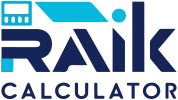Understanding Tax Equivalent Yield
When it comes to investing, understanding your returns is crucial, especially when taxes are involved. This is where the Tax Equivalent Yield (TEY) comes into play. The TEY helps investors assess the yield on a tax-free investment (like municipal bonds) by comparing it to a taxable investment. It gives you a clearer picture of what you can expect to earn after taxes, allowing for smarter investment decisions.
How to Calculate Tax Equivalent Yield
Calculating the Tax Equivalent Yield is straightforward and can be done using a simple formula.
The Formula
To find the TEY, you can use the following formula:
TEY=Tax-Free Yield1-Tax Ratetext{TEY} = frac{text{Tax-Free Yield}}{1 – text{Tax Rate}}
TEY=1–Tax RateTax-Free Yield
Breaking It Down
- Tax-Free Yield: This is the yield you receive from a tax-free investment.
- Tax Rate: This is your effective tax rate as a decimal. For instance, if your tax rate is 25%, you would use 0.25 in the formula.
Example Calculation
Let’s say you have a municipal bond that pays a yield of 4% and your tax rate is 30%. Using the formula:
TEY=0.041-0.30=0.040.70?0.0571 or 5.71%text{TEY} = frac{0.04}{1 – 0.30} = frac{0.04}{0.70} approx 0.0571 text{ or } 5.71%
TEY=1–0.300.04=0.700.04?0.0571 or 5.71%
So, the Tax Equivalent Yield of that municipal bond would be approximately 5.71%. This means that you would need to find a taxable investment that offers at least a 5.71% return to match the after-tax yield of the municipal bond.
How Do I Calculate Tax Equivalent Yield?
Calculating the Tax Equivalent Yield can help you evaluate the potential returns on your investments, particularly when comparing tax-free options to taxable ones. Here’s a step-by-step guide to calculating it:
- Identify the Tax-Free Yield: Find the yield of the investment you are considering (e.g., a municipal bond).
- Determine Your Tax Rate: Know your effective tax rate. This is essential for accurate calculation.
- Use the TEY Formula: Plug the values into the formula provided above.
- Interpret the Results: Compare the TEY with yields of taxable investments to decide which option suits your financial goals.
Why Use a Tax Equivalent Yield Calculator?
Using a Tax Equivalent Yield Calculator simplifies this process. Instead of doing the math manually, you can input the tax-free yield and your tax rate to get immediate results. This is especially helpful for investors who are looking to optimize their portfolios without getting bogged down in calculations.
Conclusion
The Tax Equivalent Yield Calculator is an essential tool for investors, helping you make informed decisions about tax-free versus taxable investments. By understanding how to calculate tax equivalent yield and using a calculator, you can maximize your returns and ensure your investment strategy aligns with your financial goals.
